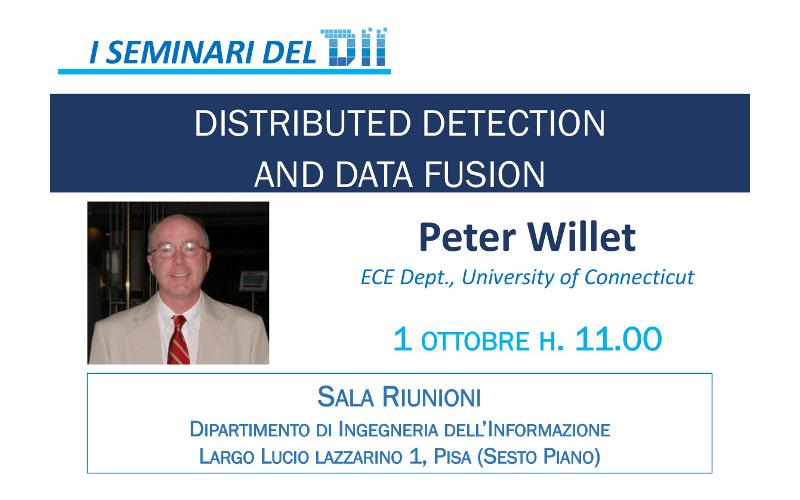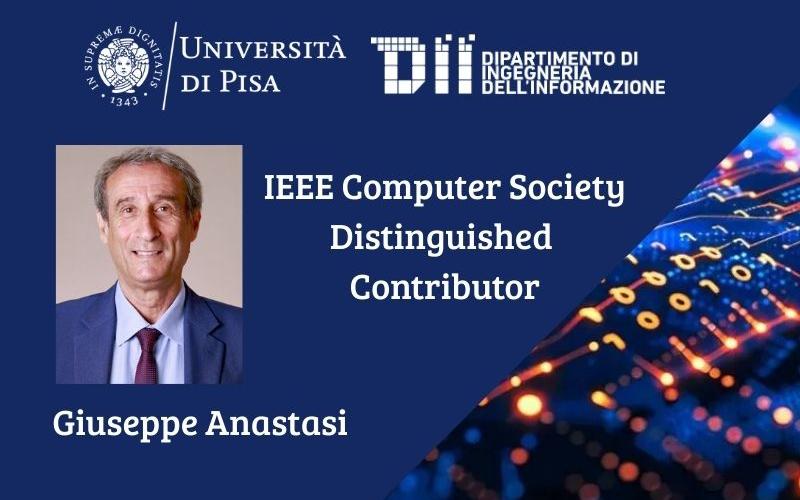La nomina a Distinguished Contributor (DC) premia i membri e gli affiliati della Computer Society che hanno apportato contributi tecnici significativi e continuativi alla IEEE Computer Society, alla...
Leggi tutto[DII Talks] Distribution Detection and Data Fusion

Sala Riunioni DII,
Scuola di Ingegneria - Sesto Piano
Largo Lucio Lazzarino, Pisa
Abstract
The initial paper on the subject of distributed detection, by Tenney and Sandell, showed that under a fixed fusion rule, for two sensors with one bit outputs, the optimal Bayes sensor decision rule is a likelihood ratio test. It has been shown that the optimal fusion rule for N sensors is a likelihood ratio test on the data received from the sensors. Reibman and Nolte and Hoballah and Varshney have generalized the results to N sensors with optimal fusion, again with the restriction of one bit sensor outputs; this has been relaxed later to multi-bit quantizations.. In this “primer” talk we explore a number of issues in distributed detection, including some pathologies, the benefits of fusion, optimal design, structures for decision flow, consensus, sensor biases, feedback, deliberate obfuscation (i.e., security) and censoring. We also devote some time to distributed estimation (i.e., fusion for tracking): why is it difficult and what seems to work best? .
Bio
Peter Willett has been a faculty member in the Electrical and Computer Engineering Department at the University of Connecticut since 1986. Since 1998 he has been a Professor, and since 2003 an IEEE Fellow. His primary areas of research have been statistical signal processing, detection, machine learning, communications, data fusion, and tracking. He is chief editor of IEEE AESS Magazine (2018-2020). He was editor-in-chief of IEEE Signal Processing Letters, 2014-2016 and before that for IEEE Transactions on Aerospace and Electronic Systems from 2006-2011. He was also AESS Vice President for Publications 2012-2014. For 1998-2005 he was associate editor for three active journals – IEEE Transactions on Aerospace and Electronic Systems (for Data Fusion and Target Tracking) and IEEE Transactions on Systems, Man, and Cybernetics, parts A and B. He is remains associate editor for the IEEE AES Magazine. He is a member of the IEEE AESS Board of Governors and of the was Chair of IEEE Signal Processing Society’s Sensor-Array and Multichannel (SAM) technical committee.



